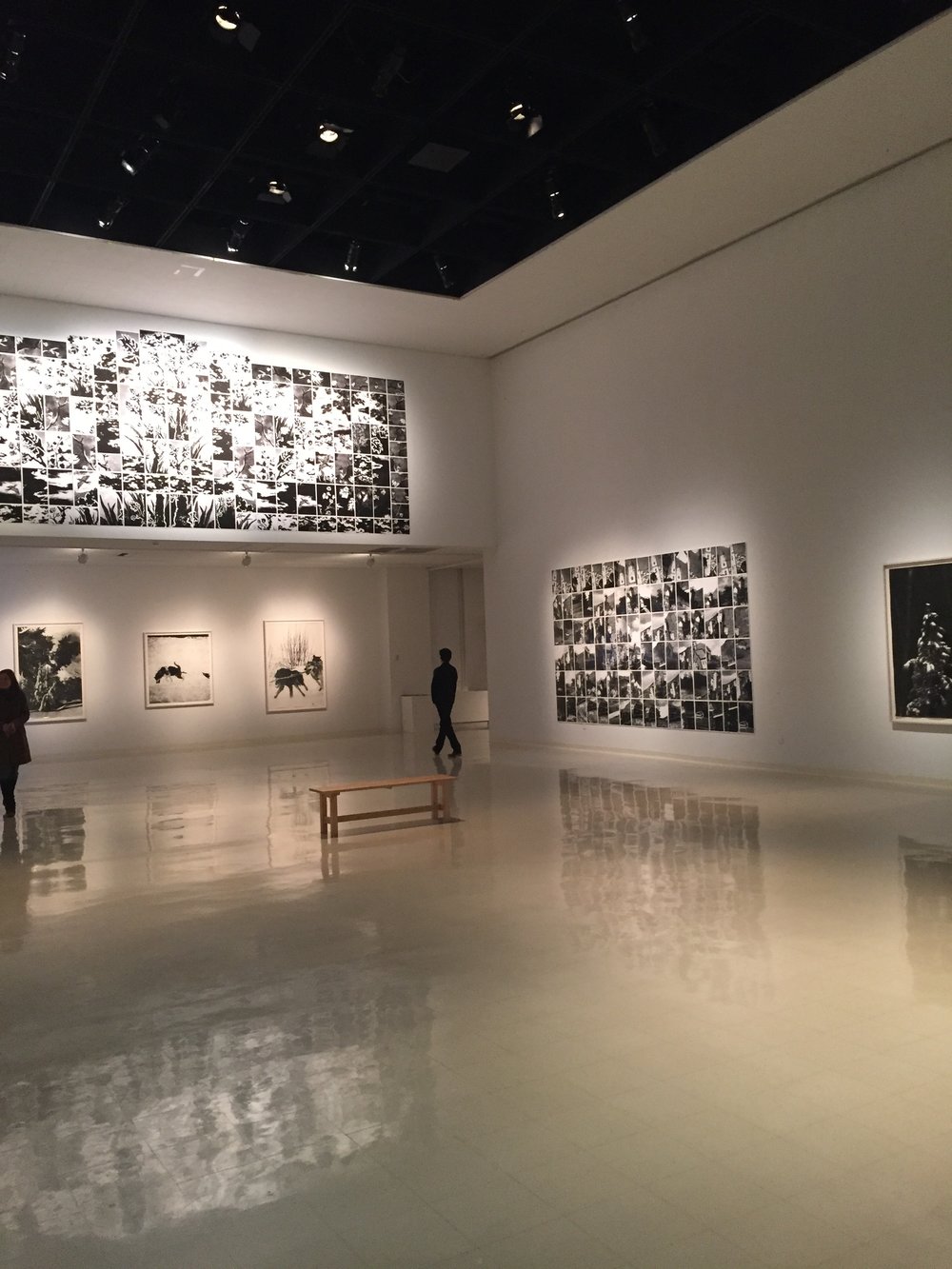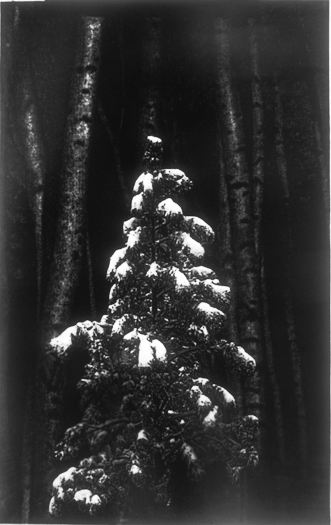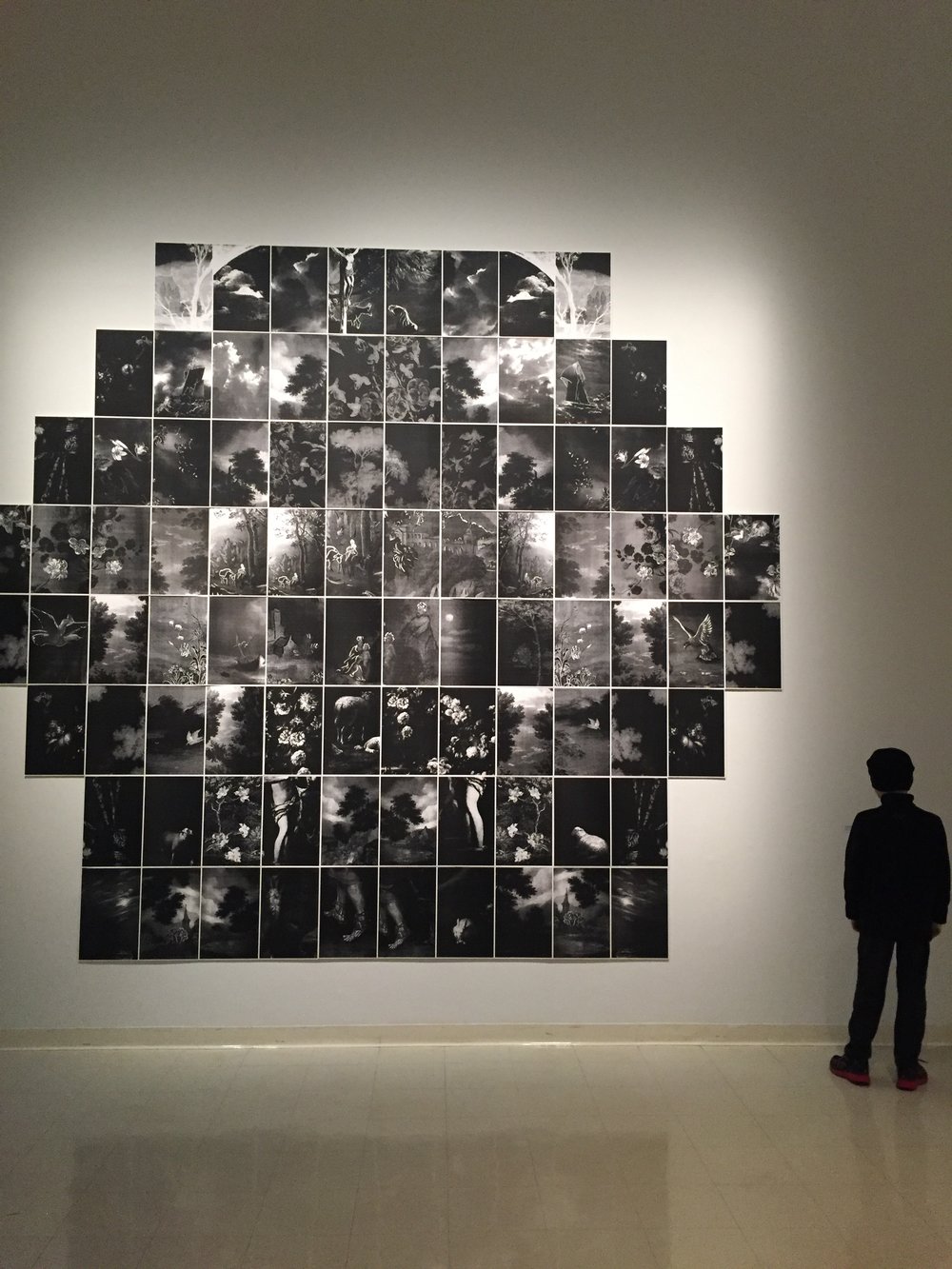DON’T TAKE PICTURES: “The Immersive Worlds of Lorna Bieber”

 Posted November 16, 2016, by Roger Thompson
Posted November 16, 2016, by Roger Thompson

Lorna Bieber: Traces at Stony Brook University. Photo by the author.
The expansive space at Zuccaire Gallery at Stony Brook University cannot be easy to
curate. A towering ceiling and broad room gives way along its back wall to an alcove,
which in turn leads to a long side gallery. The space is both looming and intimate—allowing
for long views, but also begs for close engagement. Gallery director Karen Levitov’s
keen eye for how the space can highlight the strengths of an artist’s work is apparent
in the current exhibition, Lorna Bieber: Traces.

Tree/Tree Trunks ©Lorna Bieber
Lorna Bieber is a photographer in the broadest sense of the word, and her interest clearly lies
with the limits of the art form. Working with found photographs and copy machine,
Bieber enlarges, alters, and shapes imagery in order to craft artworks that defy easy
description or categorization. The large-scale, haunting landscapes are a rumination
on the natural world. They beckon the viewer, inviting them to get closer to the scene
in order to venture into the world. And when the viewer does, they discover that an
apparently simple photograph of a tree turns out to be photographic witchcraft. Some
of the images, like “Tree/Tree Trunks,” are silver gelatin prints. By using various
layers of photocopies and old photos, Bieber has fashioned a new wholeness out of
disparate parts. What seemed a simple tree—and a stunningly beautiful one—from a distance
turns out to be a construction of the detritus of our technology.
This is even more pronounced with Bieber’s assemblages. Also large-scale, the repetition
of image and form run throughout the different installations. While individual prints
that constitute the constructions are all the same size, each one manipulates both
scale and the subject’s orientation in order to create entirely new worlds. An image
of a flower is aligned to the right in one print, but the same image is turned slightly,
moved to the left, and its size minimized, in a neighboring print. The result is a
strange familiarity amidst complete disorientation. The piece simply demands that
the viewer get close to the collected images and search out correspondences, but in
doing so, the viewer becomes wholly immersed in the scene, surrounded by the disordered
sameness. It’s marvelous, magical, and surprisingly moving. By challenging the boundaries
of what constitutes a “photograph” in these large installations, Bieber immerses the
viewer in new possibilities for the photograph’s power to reshape our world. She also
ensures that your trip to see the show is more than worth the effort.

Judgment/Exile ©Lorna Bieber. Photo by author



